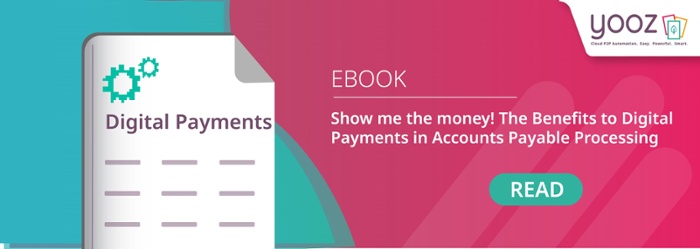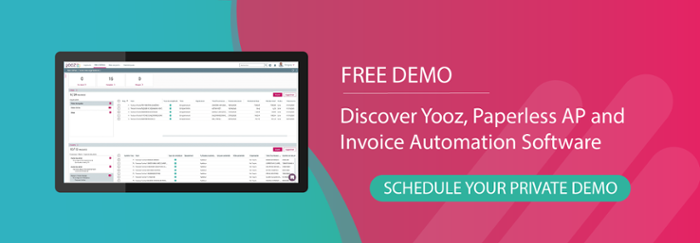A strange thing is happening all over the business world, and we’re not talking about the “Great Resignation.” Robots and robotic processes are making inroads, but they’re not necessarily shunting aside their human colleagues. Instead, they are complementing humans and augmenting their capabilities around repetitive yet detail-oriented tasks.
Software - or the brains in bots - can now handle tasks as varied as folding shipping boxes, filling them with items, and taping them up for shipping. They pick strawberries without squishing the delicate fruit, read and summarize resumes and contracts, and draw a picture based on a few words of description. Even better, companies that want to tap into this amazing resource can do so on a per-use basis. They can access compute power and the algorithms they need via the cloud or rent a robotic arm for their shop floor by the hour without worrying about coding or customization that can take months.
The transformative power of automated, smart processes is also gaining traction in the finance and accounting functions, from customer and supplier invoice processing all the way to payment automation. Smart platforms can handle most if not all tedious tasks that were previously done by humans, slashing costs, time, and errors. It’s a proven way to boost business efficiency one invoice at a time.
What is Payment Automation to a Business?
It’s change that was long in the works and has gathered steam due to the aftershocks of the pandemic. Thinned-out staff, remote work mandates and talent shortages have put more emphasis on digitalization and automation. That way, fewer employees can keep the finance function going even under challenging circumstances.
When market researcher Ardent Partners polled mid-size firms for its “AP Pulse on the Mid-Market in 2022,” they found that “...nearly 70% have prioritized AP automation in 2022,” with two-thirds of businesses stating that modernizing the accounts payable workflow is either “exceptionally” or “very valuable.”
Firms that want to focus on optimizing their operations and stay competitive need to intelligently automate their entire purchase-to-pay cycle and reduce human intervention as much as possible, from the moment a purchase order is issued to the moment an invoice is cleared for payment and funds are transferred. In fact, according to Ardent eliminating paper check payments is one of the top three priorities for enterprises this year.
How Payment Automation Improves Your Cash Management
Why, exactly, is payment automation so beneficial? In short, because there’s a vital link between frictionless B2B payments and overall cash management. As Ardent points out, getting a better handle on how you pay vendors on time, every time, results in reduced costs, improves efficiency, and helps an organization gain better control over its cash flow.
Automating B2B payments is the end point of a multi-step process that benefits any type of company in any type of industry, regardless of size. It’s all about turning invoices that have been vetted and approved into timely payments, ideally in electronic form. That way, both parties to a transaction get maximum visibility for every document while reducing delays and errors. Additionally, payment automation unlocks a new revenue stream, but more on that later.
A cloud-based platform like Yooz can streamline the entire workflow, from PO to payment, because it’s custom-built to optimize the accounts payable function, including an intuitive and secure payment gateway that runs in the same browser window where invoices are captured and reviewed. No need to switch back and forth between different tools or log-ins. Since it’s a cloud-based platform, organizations can be sure they always work with the most up-to-date and proven technology.
End-to-End Payment Automation Starts With the PO
When considering why payment automation is something every business needs, it’s worth starting at the beginning of the Accounts Payable funnel. Smart, secure, and scalable processes can only yield tangible benefits when they are applied from the get-go. Payment automation, in that sense, starts as soon as a PO first goes out.
If a PO originates from the same system as the one that later handles the invoice, capture and processing go much smoother. As soon as a vendor submits their invoice the platform will ingest the document - regardless of its format - ranging from paper invoices that still need to be scanned to email attachments and structured data files. Optical character recognition is an established tool that has since been augmented by robotic process automation and machine-learning algorithms that can read and understand every invoice.
The result is minimal human intervention. Instead, smart software extracts and indexes all relevant information such as amounts, goods billed for, due dates, bank and tax information, even accounting for multiple currencies if your supply chain is international. Full-text indexing means that the information contained in every invoice contributes to a searchable archive in the cloud. Inquiries, reviews, and audits at a later point in time are now as easy as a web search, governed by rules and permissions you can set and finetune according to your specific process needs.

One Payment Automation System That Has Seen it All
Cloud-based automation translates into more efficiency since a platform such as Yooz has seen well over 100 million invoices from tens of thousands of vendors over time and can, without prior customization, make sense of almost all formats.
While they are processed, invoices are checked against purchase orders and goods received notes, significantly cutting down on errors or exceptions that would require a team member to step in. Invoice exceptions, after all, are the most commonly reported challenge for AP teams, according to Ardent research. It’s no small matter.
Exceptions are a primary cause for higher processing costs and lengthy approval times. Ardent’s advice: “Exceptions can be eliminated by leveraging ePayables solutions that ensure all required data, in the proper format and proper fields, is included on an invoice before it is routed around for approval.”
Approve and Pay from Anywhere: Payment Automation Goes Mobile
If an organization goes the route of end-to-end AP automation, approvals can happen from anywhere, anytime. Documents are routed to the correct team members for final review, which means they can do their job from a mobile device of their choosing even if they’re not in the office. Those rules are flexible and easily customizable, for instance taking into account when an employee is out sick or on temporary leave, or if a specific supplier needs extra attention.
That way, no backlog of unprocessed invoices will ever pile up. That’s how automation does away with late fees, angry vendors calling in for payment status and additionally unlocks all early-pay discounts available.
Suppliers are now able to tap into this business network to check on invoice and payment status as well. Internally, automation gives companies a comprehensive and data-driven approach to better understand, manage and improve their organizational spend. That’s how technology can create trust and goodwill for all participants, which is more important than ever as supply chains have been rattled.
Cut Costs, Cycle Time and Errors with Payment Automation
Before we hit the “pay now” button, let’s summarize what the benefits of purchase to pay automation are:
- The cost to process a single invoice, which now stands at an average of $4-16, drops by 80%.
- Processing time, now at a glacial 12.9 days, goes down to a few days or hours.
- In 2022, close to one-third of all invoices were processed straight-through, meaning they did not require human hand holding until payment had to be authorized.
As the second “State of Automation in Finance” report compiled by Yooz shows, businesses that get on board with automation have been able cut their invoice approval times from 19 hours to 16 within the past year. The report sees that as confirmation that during the pandemic, “additional efficiency gains have been made in data entry, validation and payment processes.” The average AP department, according to the report, spends 27 hours a month managing vendor invoices, down from 36 hours in 2021.
That’s good news, but it also shows that there’s a lot of room for improvement by further streamlining the process.
Payment Automation Done Right: Three Clicks and You’re Done
Which brings us to the final step in the P2P workflow: getting payments out the door on time, every time, and without falling victim to fraud attempts or paying twice (or even more). When staff handle paper documents and juggle spreadsheets, those mistakes occur all-too-often, consuming even more hours for tracing erroneous payments or clawing back monies. It doesn’t have to be this way.
Imagine a browser interface that got you this far in the P2P workflow offering an additional, easy step to accomplish the three things to automate payments without switching tools:
- Select an invoice to be paid,
- Select the full or partial amount and
- Choose a manual or automated payment schedule. (The latter is a great time saver for handling recurring deliveries from a trusted vendor.)
That’s it!
Payment automation running in the background has already done all the prep work so funds will go out without a hitch. Vendors are invited to onboard themselves with a single email address. The only other thing they need to do is pick their preferred payment method. Ideally, they will opt for payment by virtual credit card since it generates a more detailed audit trail and comes with added security features such as velocity and use pattern checks. However, even if a vendor prefers paper or e-check, payment automation will make this process as painless and quick as possible.
Why it Pays to Pay on Time, Every Time
As soon as an invoice is approved and scheduled for payment, your suppliers are notified that they have money coming their way. It relieves staff from answering phone calls and emails, an activity that by some estimates is responsible for almost a third of working hours in the AP department.
What’s more, going the virtual card route generates valuable cash-back. Even small businesses processing a few thousand invoices a year can benefit from a new revenue stream on top of all the other advantages that intelligent purchase-to-pay automation offers.
No wonder that businesses of all stripes are getting on board with payment automation and consider investments in the space as a strategic priority to stay both resilient and competitive. As the “State of Automation in Finance” report found, 27% of US organizations have already adopted digital payments and another 49% plan to follow suit this year.
So don't wait any longer. What is payment automation? It's a way to come out of the current economic turmoil stronger and better prepared for the digital transformation that’s reshaping economies and businesses around the world. Now is the time to consider it because quite simply, it pays off to pay on time, every time.
FAQs
What is payment automation, and how does it benefit organizations?
How does Yooz facilitate payment automation for organizations, and what features does it offer?
What are the benefits of implementing payment automation, and how does Yooz help organizations achieve these benefits?
How does Yooz ensure the security of payment automation processes, especially regarding sensitive financial transactions?








